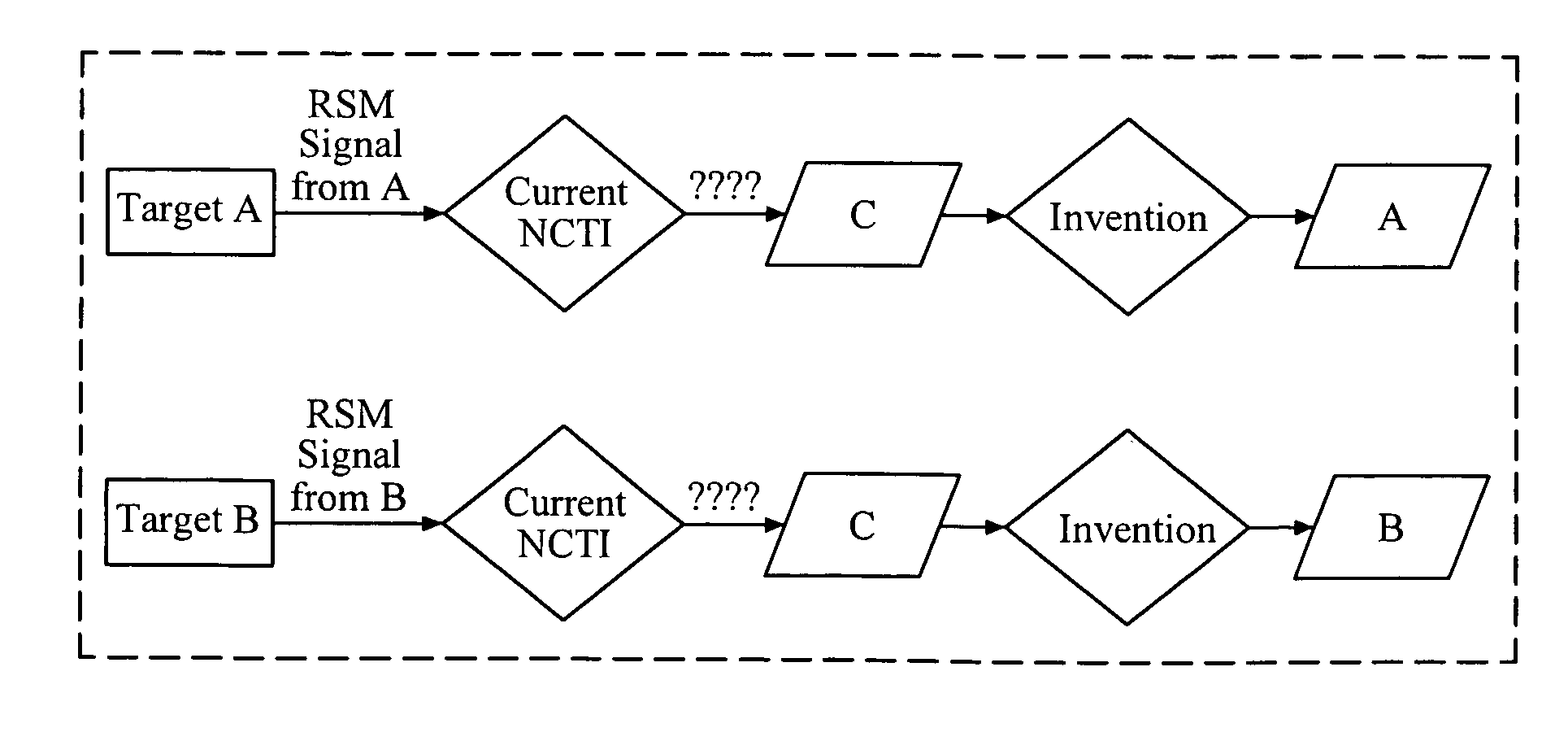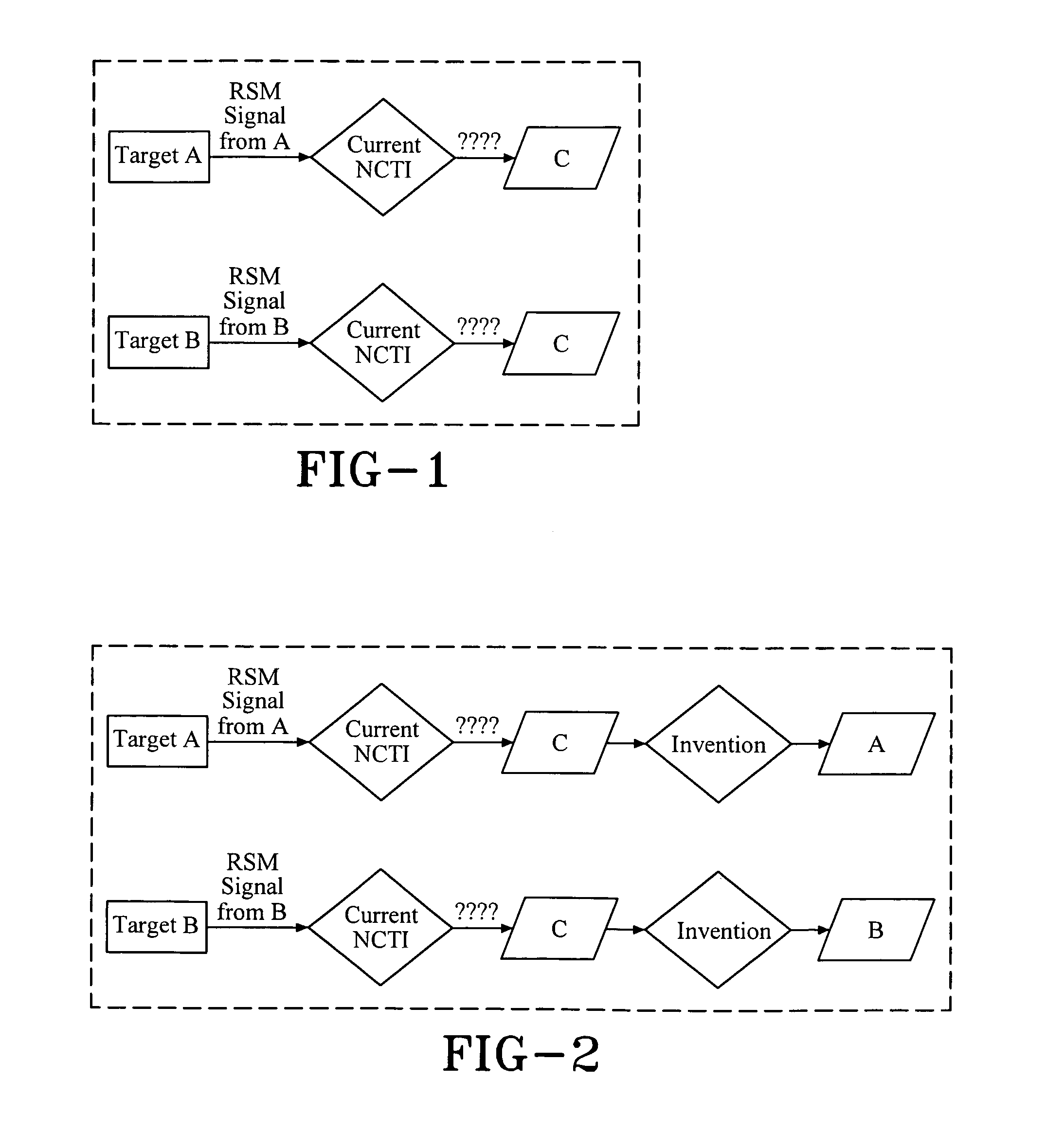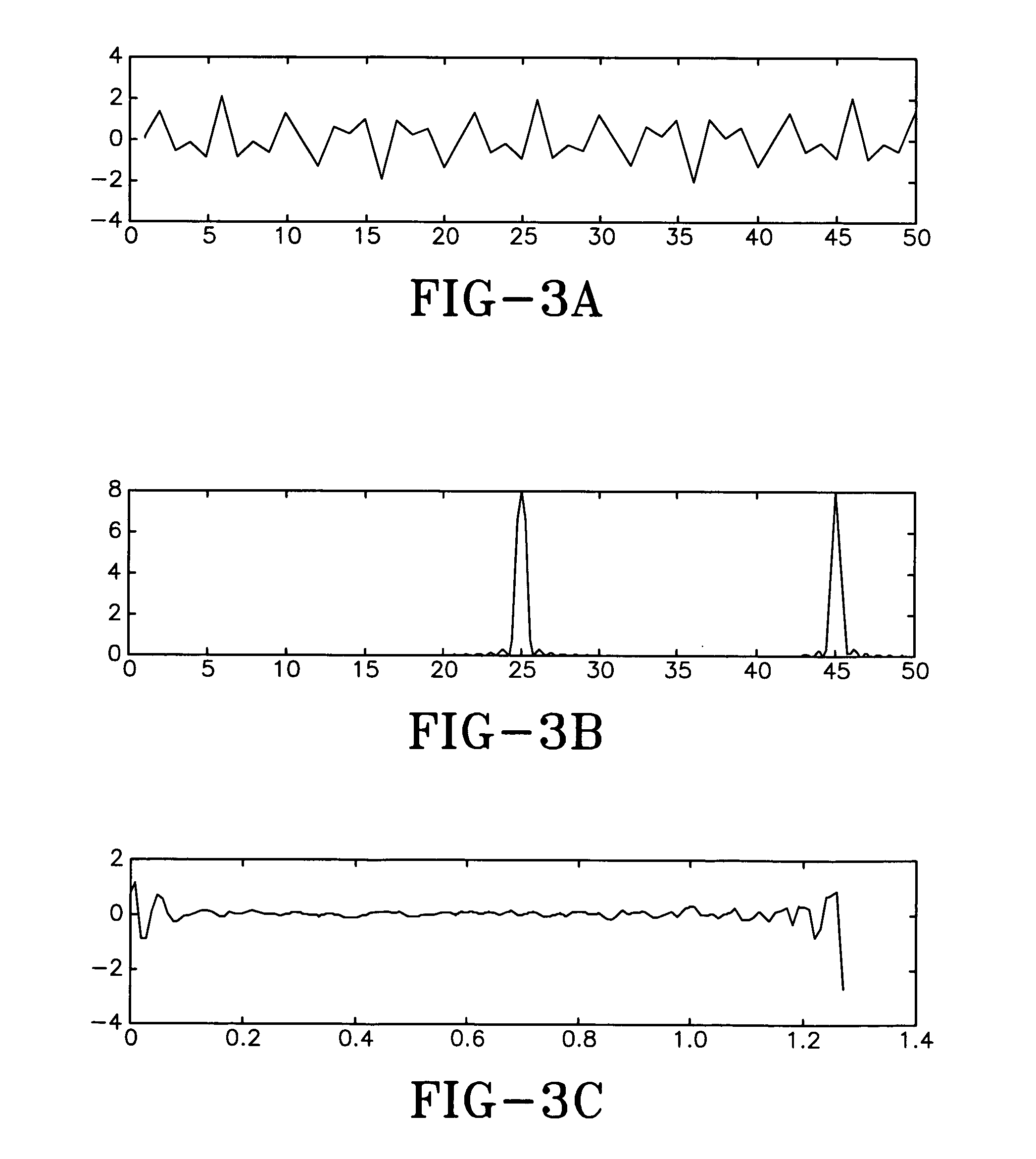Target indentification method using cepstral coefficients
a target and cepstral coefficient technology, applied in the field of digital signal processing methods, can solve the problems of ambiguity, unmatched unknown target signals with known target signals, etc., and achieve the effect of improving the known radar signal modulation method
- Summary
- Abstract
- Description
- Claims
- Application Information
AI Technical Summary
Benefits of technology
Problems solved by technology
Method used
Image
Examples
Embodiment Construction
[0022]The invention uses digital signal processing to identify unknown targets. In general, the unknown target is not “entirely” unknown because it is assumed to be a member of a group of one or more known targets. Thus, identifying the unknown target comprises choosing its identity from one of the known identities in the group. A “target” may be an animate or an inanimate object. In the case of speech recognition, the target is a human. The target may also be a nonhuman animal that creates acoustic radiation, such as a bird that sings or a dog that barks. The target may be an inanimate object that creates acoustic radiation, such as any mechanized vehicle with engine or other noise.
[0023]The target need not actively emit any measurable radiation, either electromagnetic or acoustic. In the passive target case, electromagnetic or acoustic radiation is directed to the target and reflected from the target to a receiver. The apparatus used to implement the invention may comprise known t...
PUM
 Login to View More
Login to View More Abstract
Description
Claims
Application Information
 Login to View More
Login to View More - R&D
- Intellectual Property
- Life Sciences
- Materials
- Tech Scout
- Unparalleled Data Quality
- Higher Quality Content
- 60% Fewer Hallucinations
Browse by: Latest US Patents, China's latest patents, Technical Efficacy Thesaurus, Application Domain, Technology Topic, Popular Technical Reports.
© 2025 PatSnap. All rights reserved.Legal|Privacy policy|Modern Slavery Act Transparency Statement|Sitemap|About US| Contact US: help@patsnap.com



